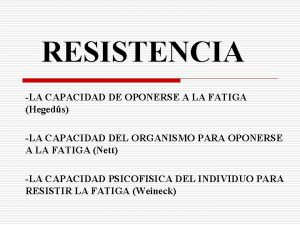PROMENADE Promenade the following Question How were the
















- Slides: 16

PROMENADE. Promenade the following Question. “How were the problems of pain and infection overcome in 19 th Century Surgery” As you pass Mr Watkins please pause, say something nice and collect your Post-It note! You will need this for the next task!

MATCH THE FACT - PAIN On ONE Post-It note. Write down THREE facts for the following Question. HOW WAS THE PROBLEM OF PAIN OVERCOME DURING THE 19 TH CENTURY? The aim is to be the last people standing. Come up with the least obvious facts you can. STAND UP. READ YOUR FACT ONE AT TIME. SIT DOWN IF YOU HAVE THE FACT AS WELL.

MATCH THE FACT - GERMS On the OTHER Post-It notes. Write down THREE facts for the following Question. HOW WAS THE PROBLEM OF INFECTION OVERCOME DURING THE 19 TH CENTURY? The aim is to be the last people standing. Come up with the least obvious facts you can. STAND UP. READ YOUR FACT ONE AT TIME. SIT DOWN IF YOU HAVE THE FACT AS WELL.

WHAT WERE THE PROBLEMS OF BLOOD LOSS? - Can describe and explain the problems of Blood Loss were overcome. (C) Can explain which factors were most important (A)

CREATE YOUR OWN BUBBL With your study buddy, I want one of you to use the Power. Point on Wat. History. weebly. com The other person will click the link for Bubbl. You will create a Mind Map of notes about the following Questions. What was the Problem of Blood Loss? How was the Problem of Blood Loss overcome? When I call time, I would like you to save a copy of the Bubbl for revision.

BUBBL Your Bubbl should like this…

EXPORT Click EXPORT AS JPG or PRINT.

FIND-SOMEONE-WHO Find someone who can answer the Questions. You can not get an answer from the same person more than once. You must get them to write your answer and their name next to the Question. Contribute & Share your answers. This will be your EXIT pass for the end of the lesson. I expect to see a COMPLETED sheet. Use this for extra revision.

HOMEWORK Answer the following Question on the Year 10 Blog Page on Wat. History. weebly. com Use today’s lesson, which is also on the site to aid your answer. How was the problem of Blood Loss overcome by Surgeons?

PROBLEMS OF BLOOD LOSS Even if patients felt no pain and were protected from infection, their blood could not be replaced Blood transfusions were tried in the 19 t h century, but normally failed. This was because surgeons and doctors did not know about blood groups. Therefore patients rejected a donor's blood, and usually died from the reaction to it.

THE FIRST TRANSFUSIONS The practice of blood transfusion – transferring blood from the circulation of one person to that of another – is relatively recent. The first successful attempts came in the 1670 s. In 1628 William Harvey had proved that blood circulates. This encouraged scientists to experiment with the idea of blood transfusion. Dr Richard Lower, a doctor in Oxford, performed one of the first transfusions from an animal to an animal. Then the first transfusion from an animal to a man was carried out by Jean Denys, a French doctor, in 1667. Denys continued to perform animal-to-human blood transfusions. Doctors in the 17 th century did not understand why some blood transfusions went well, while others did not.

TRANSFUSIONS PROBLEMS Despite Harvey’s discoveries, many doctors still believed Galen’s ideas about how blood was produced and they continued to practise bloodletting. The most popular reason for carrying out a transfusion was to try to alter the mental state of the patient. Many believed that it could restore youth to the aged, and it was even suggested that marital discord might be settled by transfusing the blood of husband wife! In 1679, the Pope issued a ban on blood transfusions, and interest in this area of research declined.

THE WORK OF JAMES BLUNDELL James Blundell (1790– 1877) was a noted doctor and obstetrician. He was the first to transfuse human blood and has been described as ‘the father of modern blood transfusion’. The first documented transfusion of human blood took place on 22 December 1818. The patient was a 35 -year-old man who was near to death. Blundell gave him approximately 14 ounces of blood from several donors. The blood was administered by syringe, in small amounts, at intervals of 5– 6 minutes. Although his condition improved at first, the patient died 56 hours later. His disease was incurable and nothing could really have been expected from the transfusion. Between 1818 and 1829, Blundell established many techniques in blood transfusion which would continue to be used.

PROBLEMS Despite Blundell’s work, the success of blood transfusions still seemed a matter of chance. One difficulty was that blood coagulates, or clots, making it impossible to transfuse. In 1860, J. Neudorfer recommended adding sodium bicarbonate to the blood to stop it clotting. Another problem was the danger of infection from unsafe transfusion methods, but this began to be resolved when Louis Pasteur proved that germs cause disease and Joseph Lister pioneered antiseptics. As a result, doctors began to sterilise instruments and use antiseptic methods.

DR KARL LANDSTEINER – BLOOD GROUPS In 1900 Dr Karl Landsteiner (1868– 1943) discovered different blood groups. It was then recognised that only compatible blood types could be successfully transfused. Scientific and technological advances became more and more involved in the development of transfusion during the 20 th century. The voluntary blood donor scheme was pioneered in London, after the Red Cross, which had set up a blood transfusion service in 1926, had requested two blood donors at short notice.

WAR & 20 TH CENTURY… Shortly after the introduction of electrical refrigeration, the first ‘blood bank’ was set up in Barcelona in 1936. Many other major developments in transfusion medicine during the 20 th century were given impetus by wars and major conflicts Freeze-dried plasma was developed in 1940. ACD (acid citrate dextrose) anticoagulant solution for the storage of blood was developed in 1943, and the development of a method of freezing blood followed in 1944.
 Costa questions level 2
Costa questions level 2 Jacques prévert promenade de picasso
Jacques prévert promenade de picasso Es la capacidad de oponerse a una resistencia
Es la capacidad de oponerse a una resistencia Promenade des remparts lille
Promenade des remparts lille Une promenade rue
Une promenade rue Future in the past continuous
Future in the past continuous Present simple question words
Present simple question words Closed question example
Closed question example Contoh open-ended question adalah
Contoh open-ended question adalah Factor isolating questions vs factor relating questions
Factor isolating questions vs factor relating questions Direct into indirect questions
Direct into indirect questions Compelling question examples
Compelling question examples Compelling question examples
Compelling question examples Look at the pictures and answer the questions
Look at the pictures and answer the questions Answer this question in your notebook
Answer this question in your notebook In your notebook write questions and answers
In your notebook write questions and answers Answer the following questions on your notebook
Answer the following questions on your notebook































